(Reading Intervention)
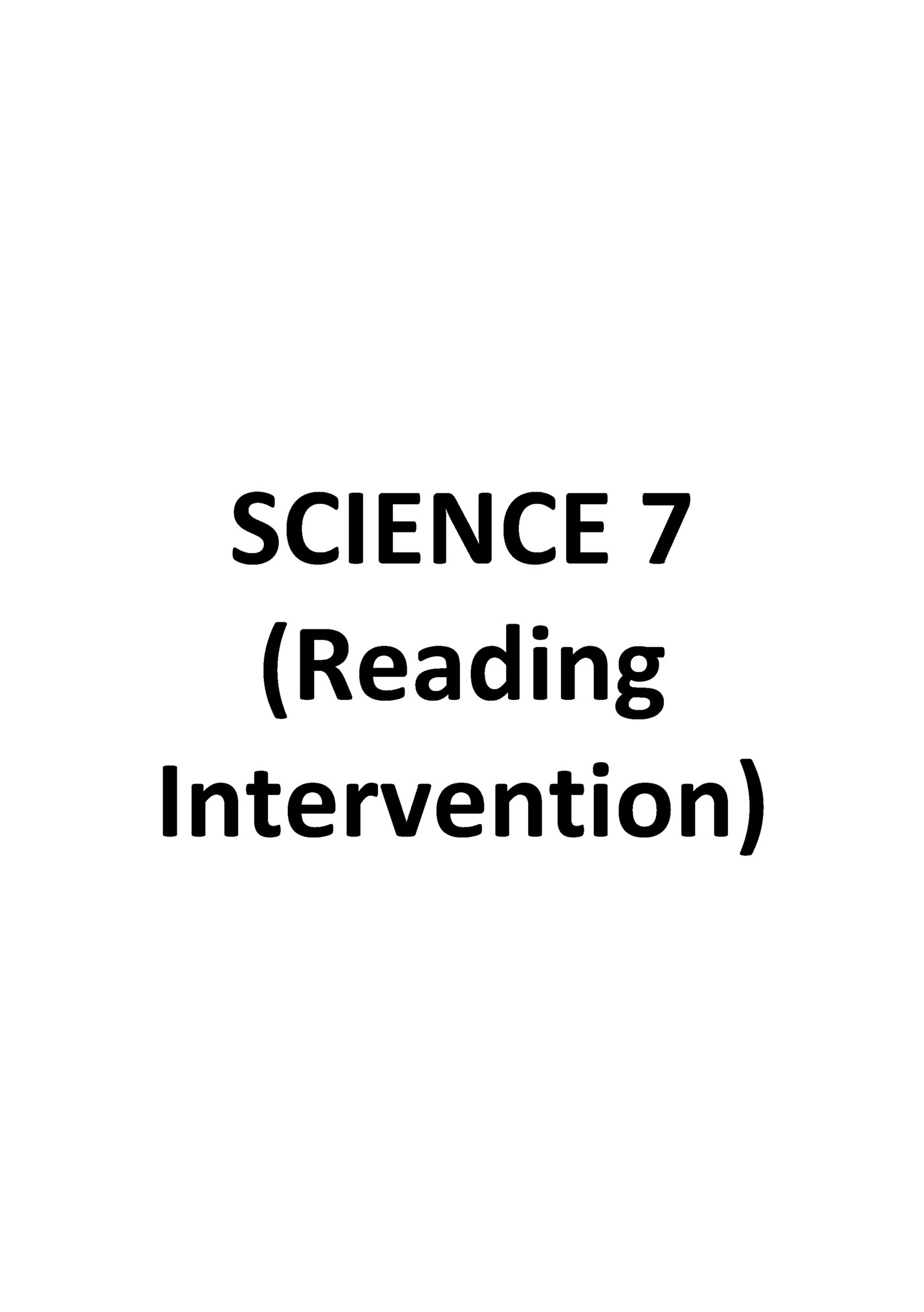
Direction: Read the passage and from the text answer the questions that follow. WHAT IS LIGHT? Light is a form of energy which help us to see object. It is a type of electromagnetic radiation that can be seen with the eye. Electromagnetic radiation is composed of actual particles (called photons) and travels in waves. Other forms of electromagnetic radiation,such as microwaves and x-rays.cannot be detected by the eye. Light,microwaves,and x-rays are forms of radiant energy. Light can be described in terms of brightness and color. Brightness,or amplitude,is determined by the number of photons. Wavelength determines the color interpreted by our eyes. The three primary colors of light are red , green and blue. A red color appears red because only red light is reflected while the other colors of light are absorbed. Objects appear black because they absorb all the colors of light, while white objects appears white because they reflect all the colors of light. Light travels in straight lines and at a very high speed. If you shine a flashlight into a dark room, you will see the straight beam of light. Light travels 186.000 miles per second, or 300,000 kilometers per second. No. Of words: 183 Questions 1. What is light? A. A form of energy B. It is a type of electromagnetic radiation C. It travels in straight lines and at a very high speed D. All of the above 2. What determines the color of light? A. The Wavelength of visible light C. The number of photons B. The absorb colors D. The speed of light 3. If all colors of light are absorbed by a medium, then what color will be perceived? A. Red B. Black C. Green D. White 4. What are the three colors that can be mixed to make any other colors A. Primary colors C. Electromagnetic colors B. Secondary colors D. Supplementary colors 5. How does light travel? A. Travels in a circle C. Travels in wavy line B. Travels in a straight line D. Travels in vibration
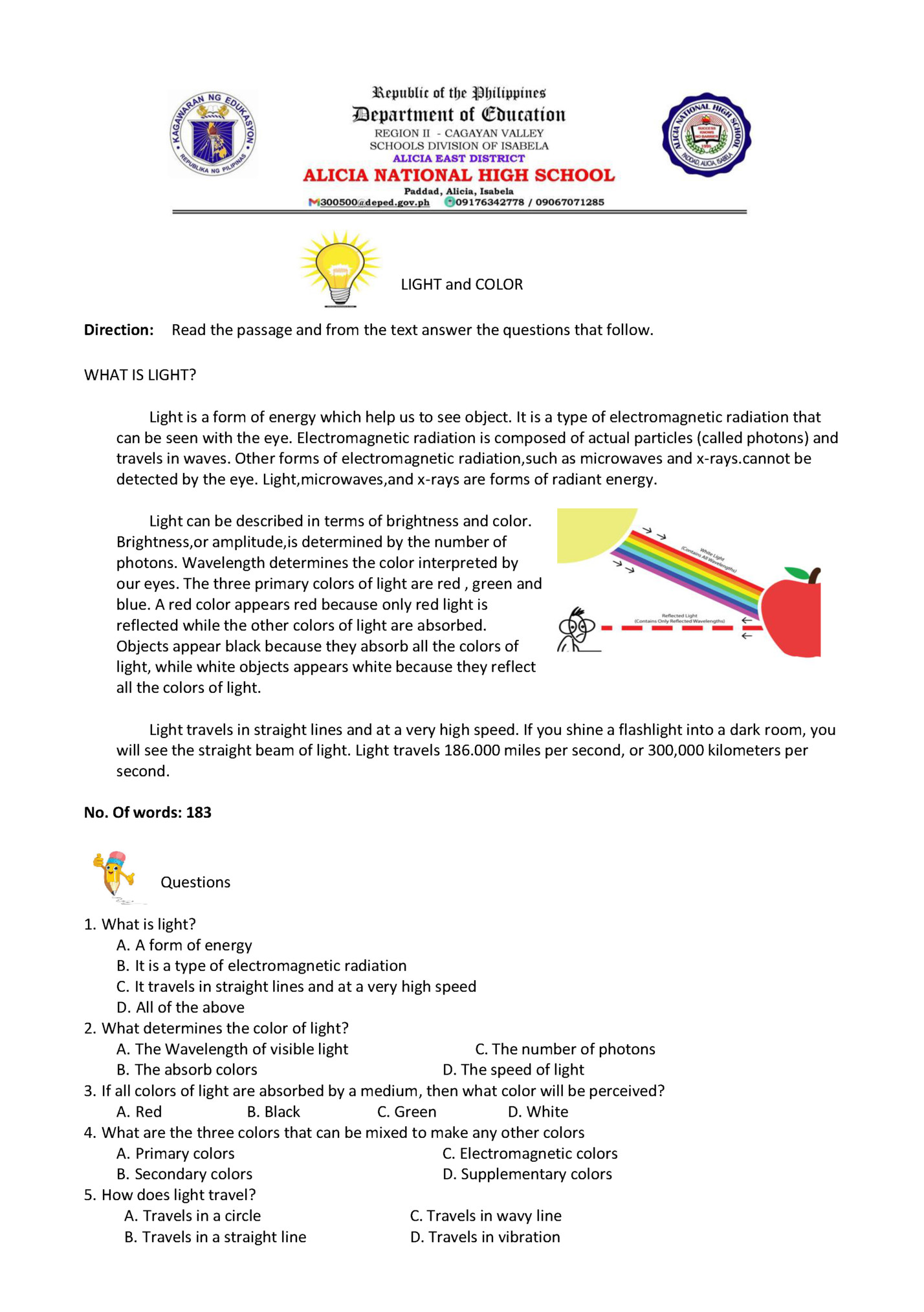
Direction: Read the passage and from the text answer the questions that follow. Sound Waves the same direction that the sound All sounds begin with vibrating matter. For example, a guitar string vibrates when it is plucked. The vibrating string repeatedly pushes against the air particles next to it. The pressure of the vibrating string causes these air particles to vibrate. The air particles alternately push together and spread apart. This starts waves of vibrations that travel through the air in all directions away from the strings. The vibrations pass through the air as longitudinal waves, with individual air particles vibrating back and forth in waves travel. Sound waves are mechanical waves, so they can travel only though matter and not through empty space. This was demonstrated in the 1600s by a scientist named Robert Boyle. Boyle placed a ticking clock in a sealed glass jar. The clock could be heard ticking through the air and https://www.thefamouspeople.co glass of the jar. Then Boyle pumped the air out of the jar. The clock was still m/profiles/robert-boyle running, but the ticking could no longer be heard. That’s because the sound couldn’t travel away from the clock without particles of matter to pass the sound energy along. Sound waves can travel through many different kinds of matter. Most of the sounds we hear travel through air, but sounds can also travel through liquids such as water and solids such as glass and metal. If you swim underwater—or even submerge your ears in bathwater—any sounds you hear have traveled to your ears through water. You can tell that sounds travel through glass and other solids because you can hear loud outdoor sounds such as sirens through closed windows and doors. (Source: https://www.ck12.org/workbook/ck-12-physical-science-for-middle-school workbook/section/20.1/ No. Of words: 269 Questions 1. How do sound waves begin? A. All sounds begin with vibrating matter B. All sounds begin with undisturbed matter C. All sounds begin in an objects under pressure D. All of the above 2. Which of the following is most likely to transmit sound best? A. Steel door B.water in a river C. Air in classroom D. Wood plank 3. Which of the following statements is not true about sound waves? A. sound wave is a mechanical wave. B. A sound wave is a means of transporting energy without transporting matter.

D. A sound wave is a pressure wave; they can be thought of as fluctuations in pressure with respect to time. 4. When sound travels through air, the air particles_______ A. Do not vibrate B. Vibrate but not in any fixed direction C. Vibrate perpendicular to the direction of wave propagation D. Vibrate along the direction of wave propagation 5. How did Robert Boyle demonstrate that sound waves cannot travel through empty space? A. Boyle placed a ticking clock in a sealed glass jar. B. Boyle placed a ticking clock in an open glass jar. C. Boyle submerged a ticking clock in water . D. All of the above WAVES One way energy is transported is through waves. A wave is the direction and speed energy travels in a back-and-forth or up-and-down motion. Waves result from vibrations, and vibrations, are the repeating motion of things along the same path. Waves travel, or oscillate, in the direction in which the wave travels. Mechanical waves require some sort of solid, liquid, or gaseous medium through which to pass. Sound is a mechanical wave transmitted through air, liquids, or solids. Electromagnetic waves, like light, depend on the vibration of electric and magnetic fields to carry energy, and they require no medium. They can pass from the sun or other source through the near vacuum of space. Waves are either longitudinal, transverse, or some combination thereof. When a wave travels through matter, the particles of https://www.oercommons.org/courseware/ the medium (matter) vibrate. In a longitudinal wave, the lesson/80784/overview motion of the particles is a back-and-forth motion. Sound waves are longitudinal waves. These waves are also called compression waves. In a transverse wave, the motion of the particles is an up-and-down motion. Light waves are transverse waves. No. Of words: 178 Fill in the blank with a word from the passage that makes the sentence true. The direction and speed of energy that travels in a given motion is known as a _______________. .________________ waves require some sort of solid, liquid, or gaseous medium through which to pass. In a____________________ wave, the motion of the particles is a back and forth motion. In a _________________ wave, the motion of the particles is an up-and-down motion ______________________waves, like light, depend on the vibration of electric and magnetic fields to carry energy, and they do not require a medium.
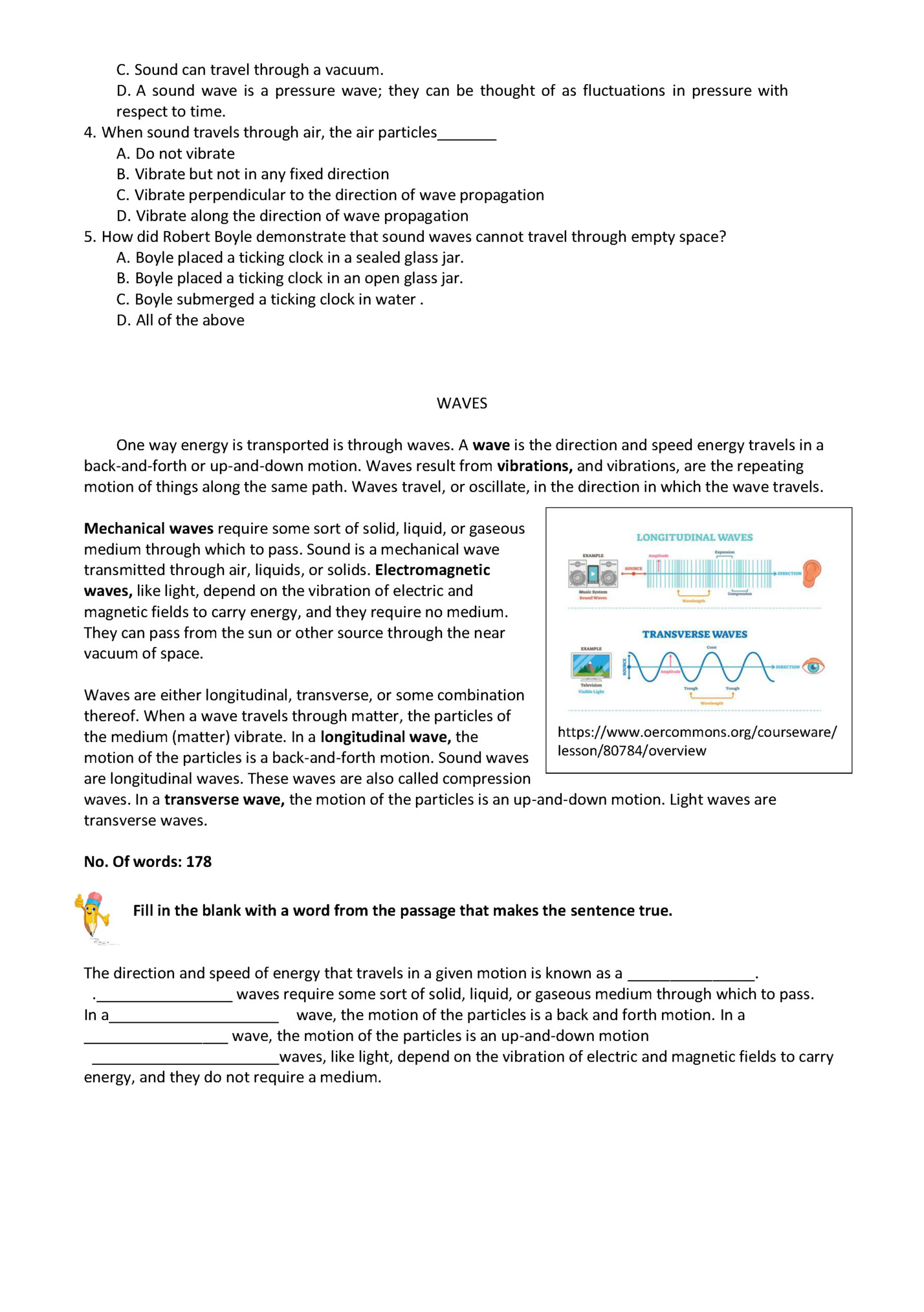
All waves have four characteristics-amplitude, wavelength, frequency, and wave speed. The high point of a wave is called the crest. The lowest point is called the trough. Amplitude is the distance a wave moves (the maximum height of a crest or depth of a trough) from the resting position. Wavelength is the distance between identical points on an adjacent wave. On a longitudinal wave, the regions where particles are bunched together are known as compressions and the regions where the particles are spread apart are called rarefactions. Sound waves have a few special characteristics. A sound wave is a vibration that moves through matter. The pitch of a sound depends on how fast the object that is making the sound is vibrating. The number of vibrations can be counted. This is called the frequency. The faster something vibrates, the high the pitch or frequency. The wave speed is how far a wave travels in a given length of time. No. Of words: 159 Questions Direction: Read the passage and from the text answer the questions that follow. 1. Regions where the particles bunch together in a longitudinal wave are called: A. Frequency C. Amplitude B. Compressions D. Rarefactions 2. Regions where the particles are spread apart are called: C. Frequency C. Amplitude D. Compressions D. Rarefactions 3. What is the number of vibrations per second a sound wave makes called? A. Pitch B. amplitude C. frequency D. trough 4. Parts of a longitudinal wave where the particles are spread apart: A. Compression B. pitch C. rarefaction D. amplitude 5. How far a wave travel in a given length of time. A. Wave B. Wavelength C. Wave speed D. Sound wave
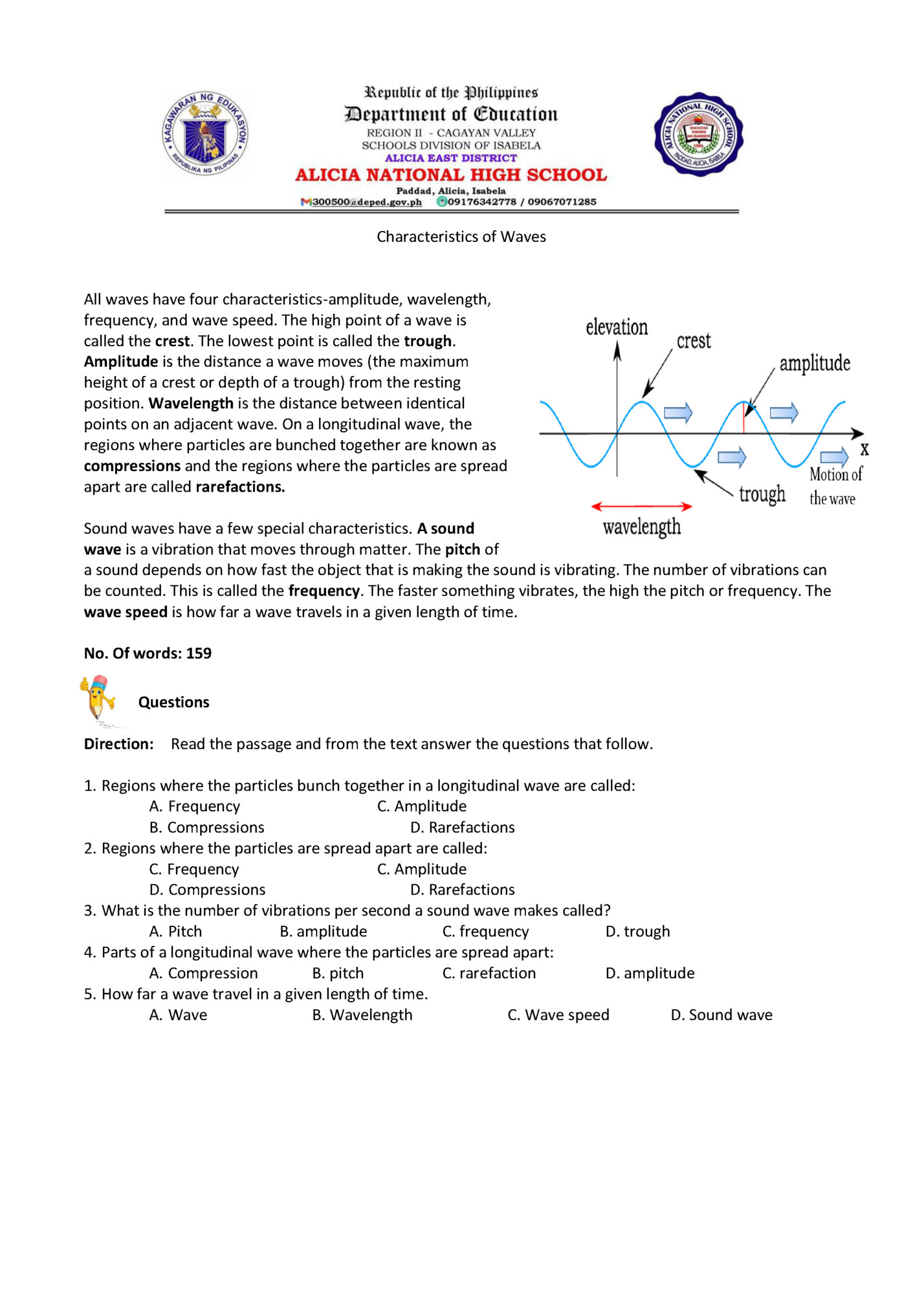
Direction: Read the passage and from the text answer the questions that follow. All matter is made up of atoms and they are always in motion (kinetic energy).The higher the kinetic energy of a substance's atoms, the higher its temperature. The atoms in a glass of water have greater kinetic energy than those in ice. Therefore, a glass of water has a higher temperature than ice. Heat is the flow of this energy from a warm object or substance to a cooler object. Whenever there is a temperature difference, heat energy (thermal energy) is transferred through one of three processes- conduction,convection, or radiation. Conduction Heat energy is transferred in solids when they are in physical contact through a process called conduction. The transfer happens when atoms of a substance absorb energy and begin to move or vibrate more quickly. They then bump into their neighbors and transfer the energy to them. When you hold a hot dog or marshmallow over a fire, the thermal energy from the fire is transferred through the fork or stick until it reaches your hand. Convection Heat energy is transferred through liquid and gases through a process called convection. As fluids (liquids and gases) are heated, they expand and begin to rise and carry thermal energy with them. Cooler, denser fluid then sinks to takes its place. This rising and sinking is called a convection current. A hot air balloon rises as the air inside of the balloon is heated. As it cools, it sinks inside of the balloon and eventually the balloon will slowly come down if more heat is not added to the air. Radiation Not all heat transfer requires the substances to be physically touching! Unlike conduction and convection, heat transfer through radiation can occur through space or transparent solids and fluids. Thermal radiation (infrared radiation) is a type of electromagnetic wave. When these waves land on an object, some of the energy of the wave is transferred to the object and raises its temperature. For example, we feel heat from the Sun or from a fire even though we are not physically touching it. No. Of words: 340 Questions 1. What is heat? A. A gas C. the movement of thermal energy B. A molecule D. a way of measuring temperature 2.Heat always moves from a warm object or substance to a cooler object A.True B. False 3.Which of the following substances are the particles packed tightly together A.Liquid B. Solid C. Gas D. All of the above
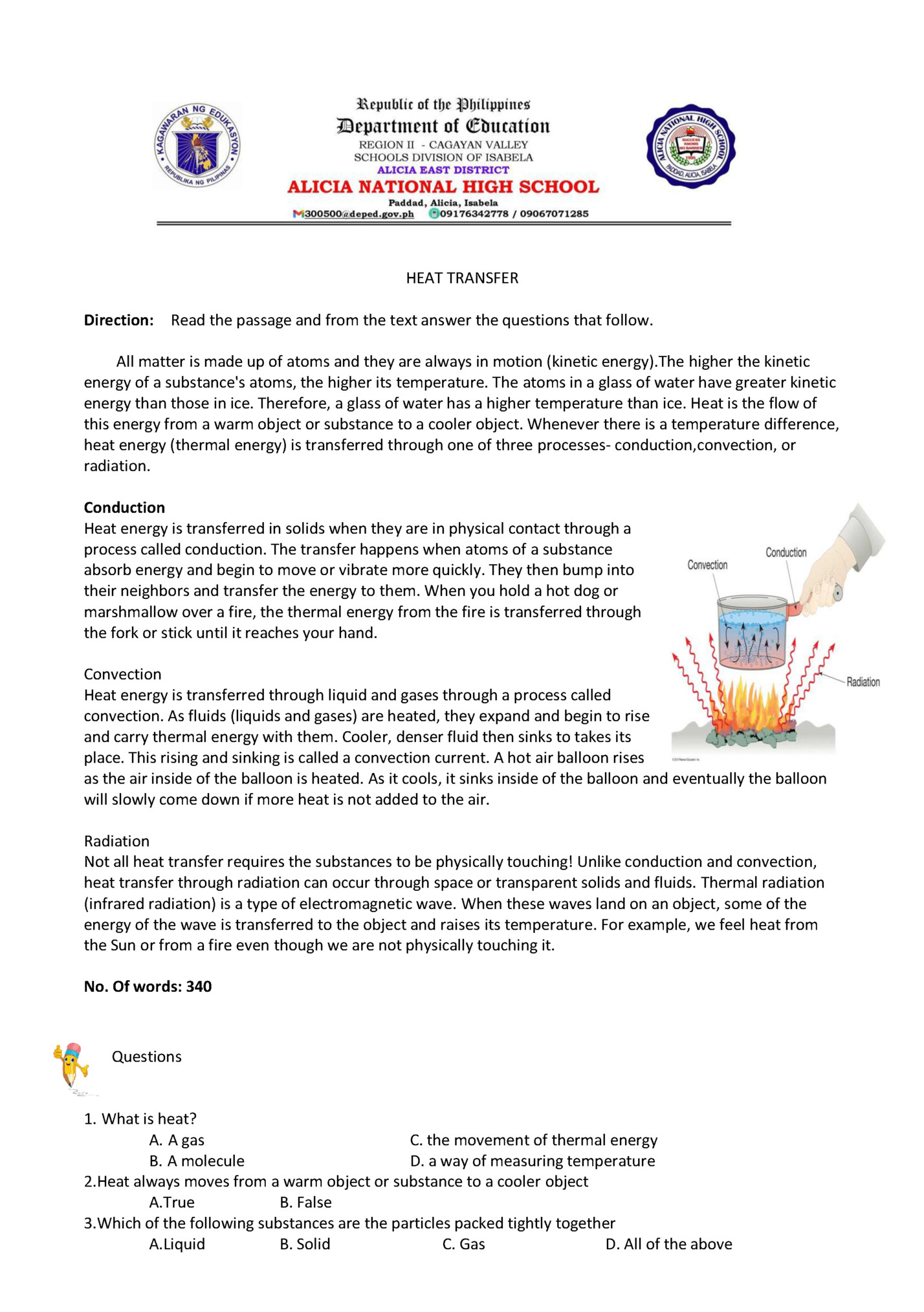
A.Condensation C. Radiation B.Convection D. Conduction 5.Which of the following methods of transferring heat create a circular flow? A. Radiation B. Convection C. Conduction D. Both A and B 6.Which of the following methods of transferring heat transfers energy into solids? A.condensation C. Radiation B.Convection D. Conduction
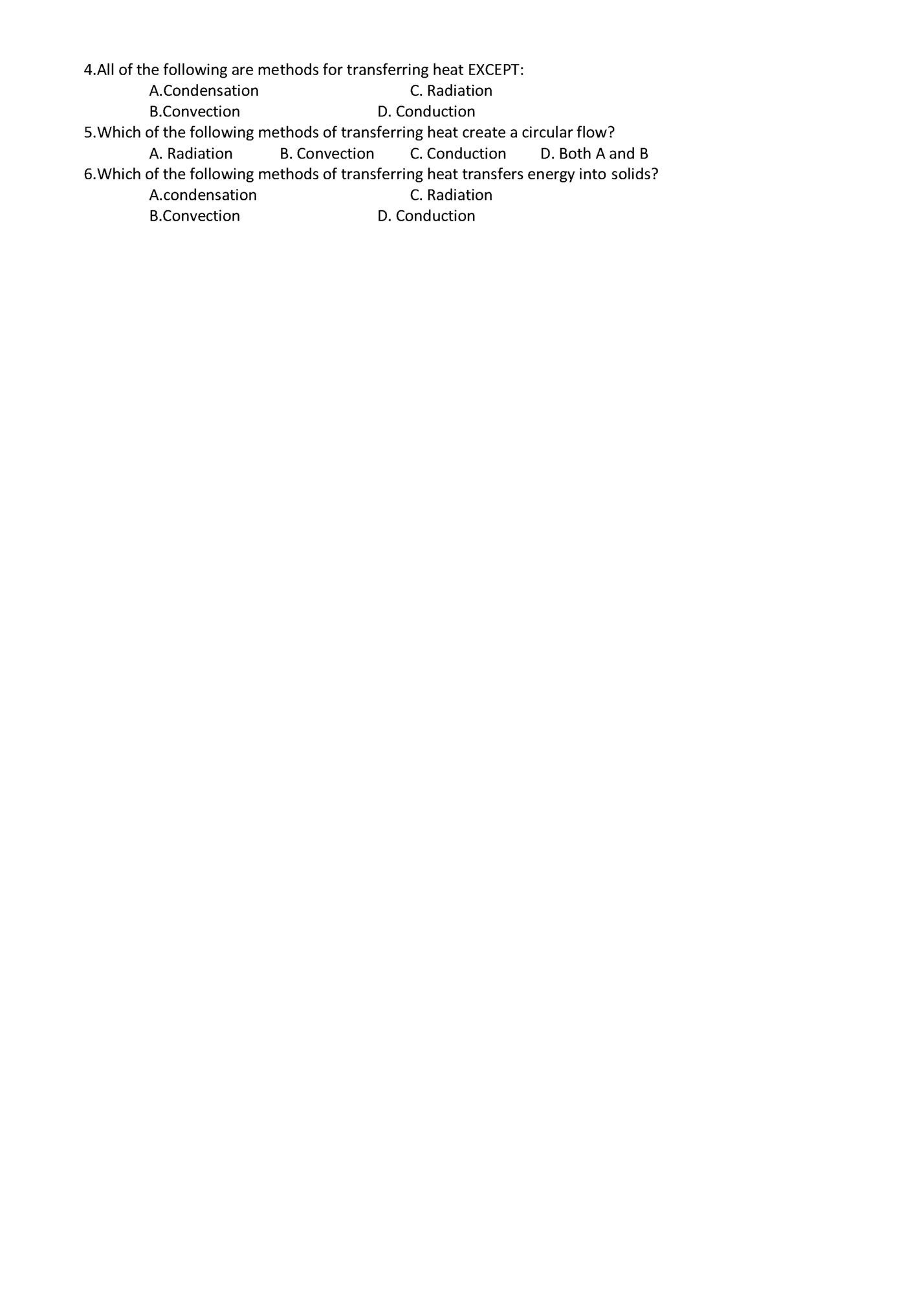
1. C 2. A 3. B 4. A 5. D 6. D ANSWER KEY(Characteristics of Water) 1. B 2. D 3. C 4. C 5. C ANSWER KEY (Reading About Sounds) 1. A 2. A 3. C 4. C 5. A ANSWER KEY (Light and Color) 1. D 2. A 3. D 4. A 5. B ANSWER KEY (Waves) 1. Wave 2. Mechanical waves 3. longitudinal wave 4. transverse wave 5. Electromagnetic waves
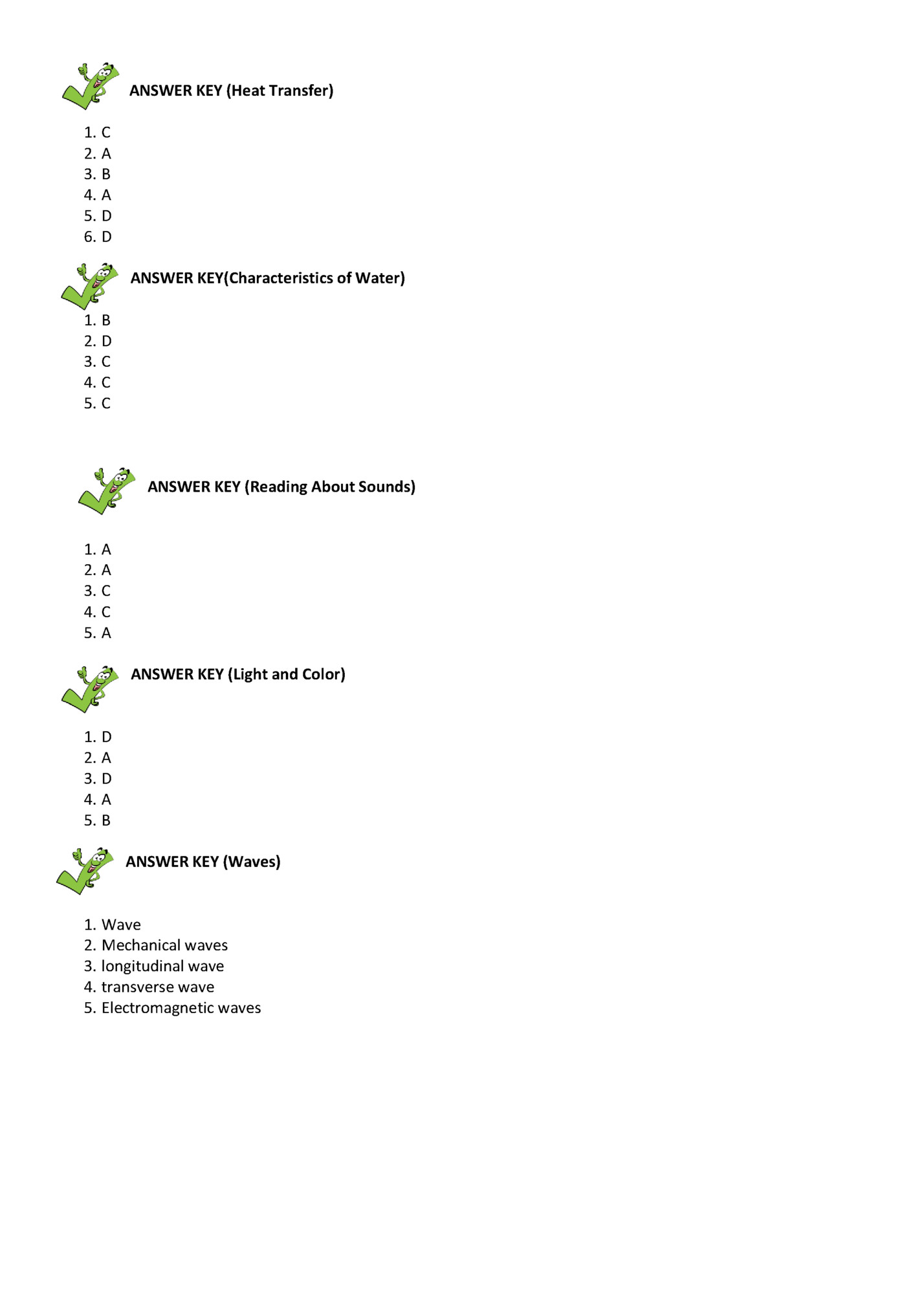
(Reading Interventions)
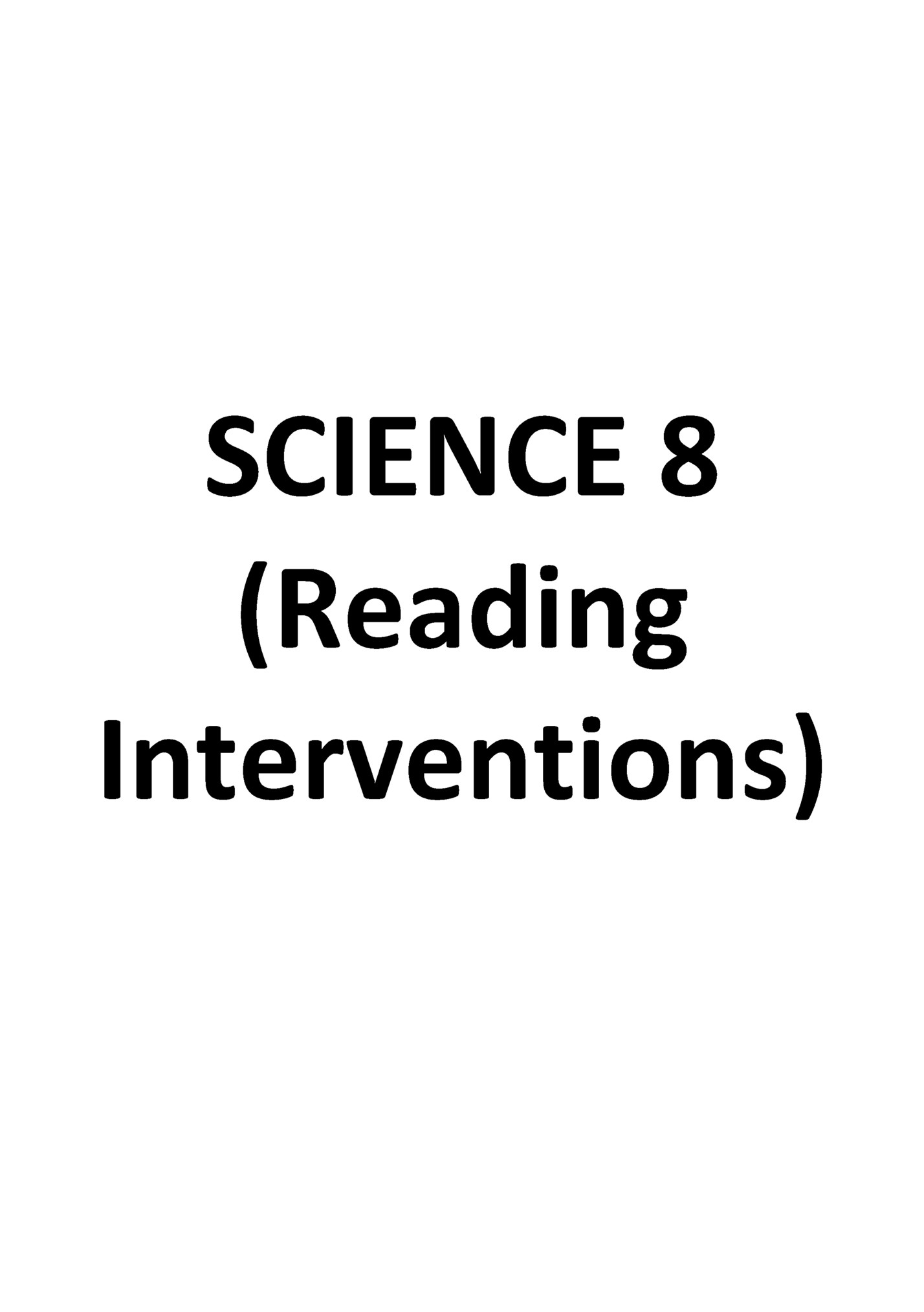
Fleepit Digital © 2021